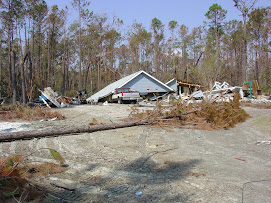From Fox Business News
Thursday, Jan. 31 2008
FEMA Code Violation on Fisher Island Potentially Threatens National Flood Insurance Participation for Miami Beach residents
Unchecked violations of Floodplain Management regulations could cause FEMA to put Miami Beach on probation and eventual suspension from the National Flood Insurance Program (NFIP) which currently provides a 15% discount on flood insurance premiums for property owners in Miami Beach. If the city fails to enforce its regulations, it could result in higher flood insurance rates for policy holders. In suspended cities where flood disasters occur, certain types of disaster assistance from the federal government are not available at all.
The City of Miami Beach is currently rated as Class 7 out of 10 (with 10 being the lowest) on NFIP's Community Rating System. This rating entitles property owners in Miami Beach to receive a 15% discount on flood insurance premiums. NFIP bases its ratings on local governments' compliance with federal requirements and on local government efforts to eliminate or mitigate exposure to flood damage through regulation. Each 1-point increase in class rating represents an extra 5% discount on premiums, with a Class 1 rating carrying a 45% discount and a Class 10 carrying no discount at all. As of November 2007, Miami Beach had 48,233 flood insurance policies in effect, insuring $7,491,479,400 of property.
I know there is a Miami Valley in Ohio (named after the Miami Indians). But is there a Miami Beach Ohio? Is it just west of Cleveland on Lake Erie? Because if they are talking about a Beach in Florida, why on earth are they getting a discount?
Just Before Sunset
Miami Beach, OH


3 comments:
Interesting post Russell. I sent word to a friend down there to look and comment. He has much going on and may not get the message for a while so I'll jump in first.
We visited that area back in 2006 and I was struck but the high end development both on the beach itself and off the MacArthur Causeway, which looked situated less than 10 feet above sea level to my untrained eye.
To tie things in, the NFIP has basic compliance standards in order for a community to participate in the program. An overview of that process is found here:
http://tinyurl.com/2xaxhe
If a community meets those basic standards then it can join the program. Bear in mind that flood insurance is also about hazard mitigation as much as it is about insurance (an ounce of prevention concept) and to further encourage sound development the program offers discounts to communities that go above and beyond basic floodplain management activities. This concept forms the heart of the CRS rating system.
http://tinyurl.com/ypbwdp
http://tinyurl.com/2efedh
THe 7 rating assigned to the City of Miami Beach Florida (Not to be confused with the City of Miami Florida) means they meet and slightly exceed basic flood plain standards.
Here on the Mississippi Gulf Coast the new flood maps were revealed very recently. The City of Bay St Louis is upset with the work product because it set base flood levels in their newly annexed marshy area sufficiently high to reflect the fact we should not be developing marshes.
While I don't know enough yet to have a set in concrete opinion I will say at first blush, hindsight reveals Mayor Favre's adventures in annexation was a poor choice pre Katrina.
sop
I believe you were right, Russell, and the beach is the deserted settlement Miami in Erie County, Ohio.
http://www.werelate.org/wiki/Place:Erie,_Ohio,_United_States
Well I was being somewhat satirical. Given that half the criteria are making maps and public awareness, you could probably build a little village on a dilapidated jetty, and still get a halfway decent number. I looked at the ratings of some of North Carolina towns and noticed a few of the ones that are not known for flooding have a poor number. I assume it is because flooding is not much of an issue for them so they spend their energies elsewhere.
If you want to look up your hometown, I found this link:
http://www.fema.gov/pdf/nfip/manual200710/19crs.pdf
Post a Comment